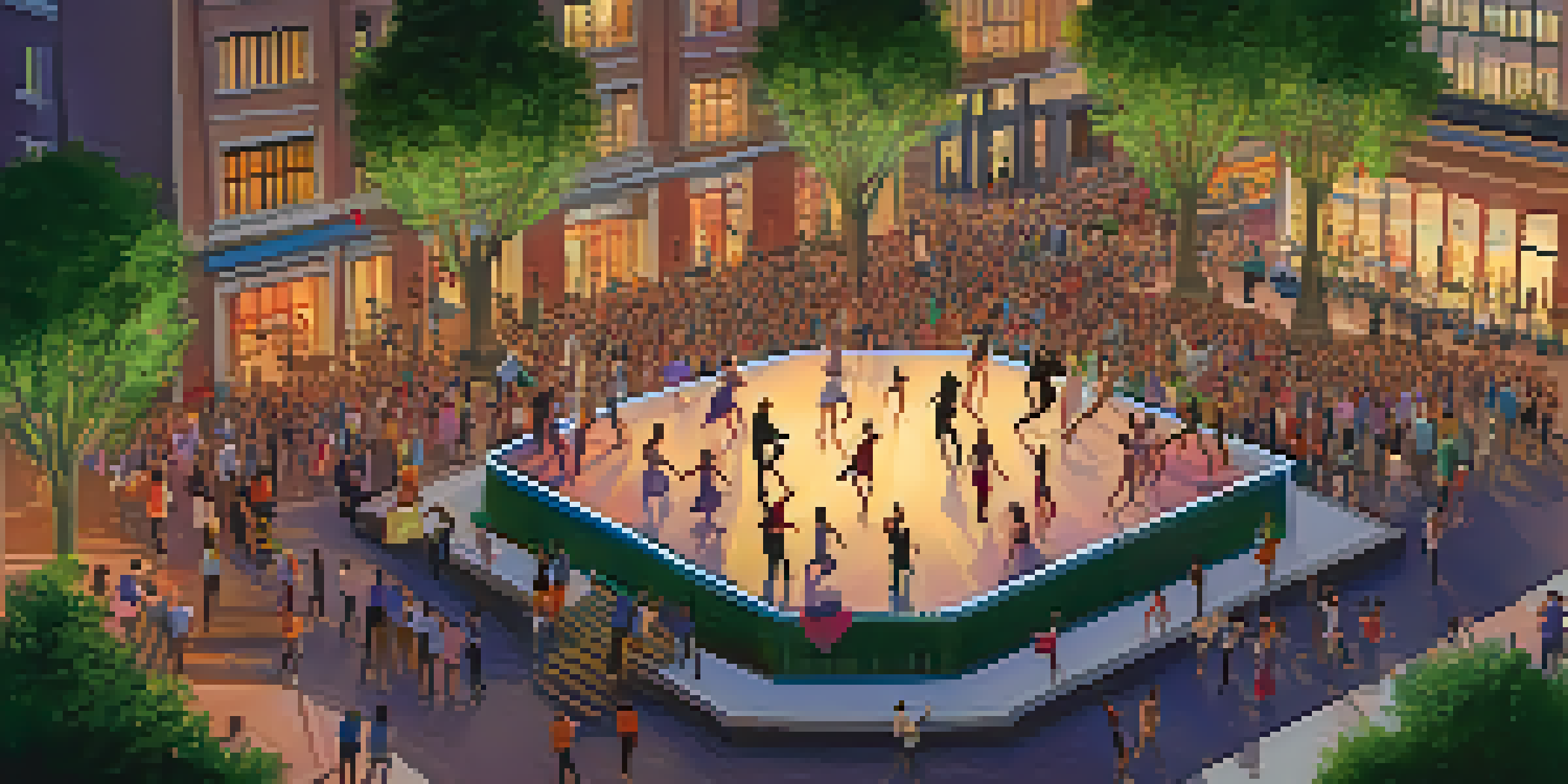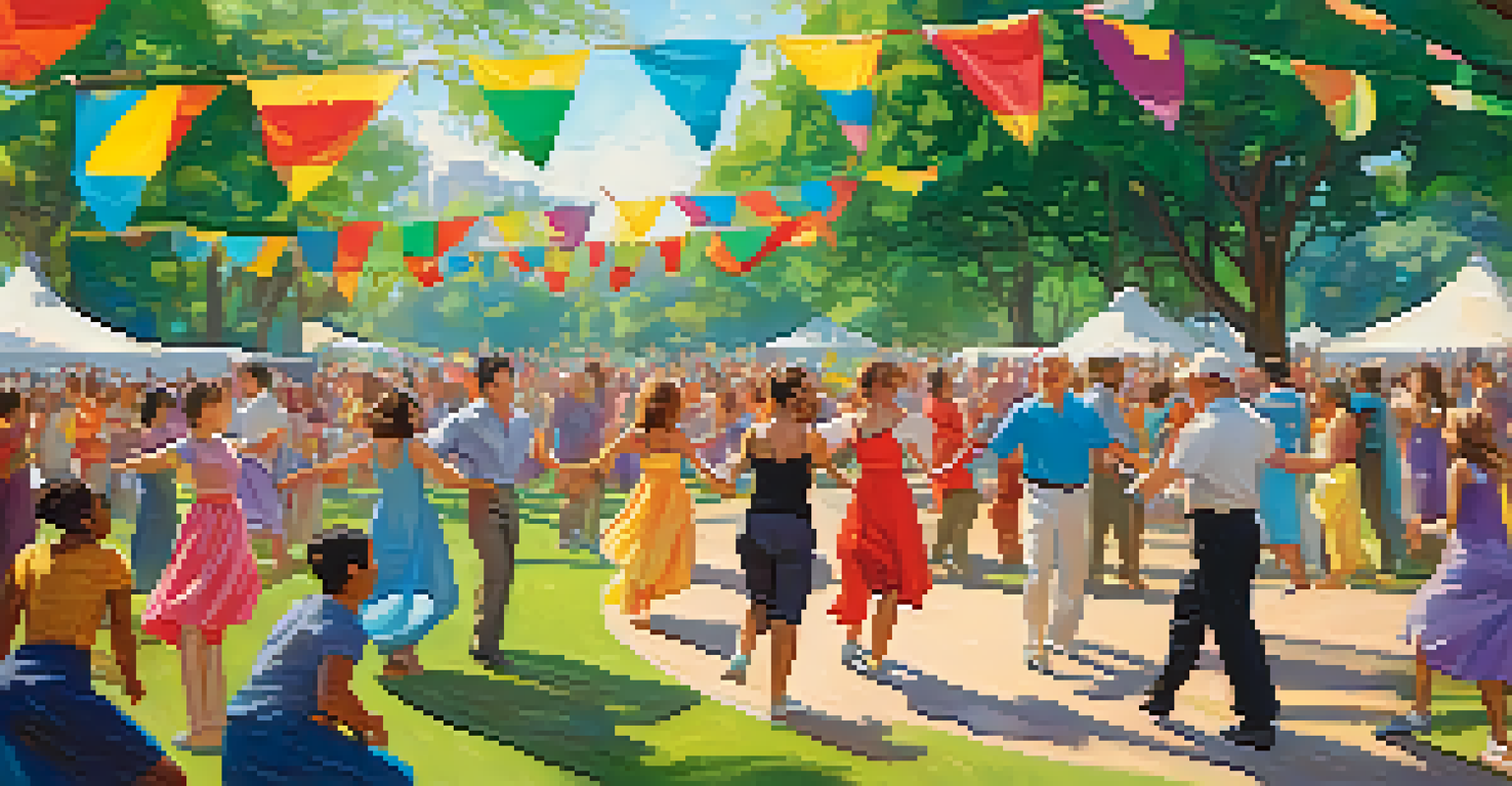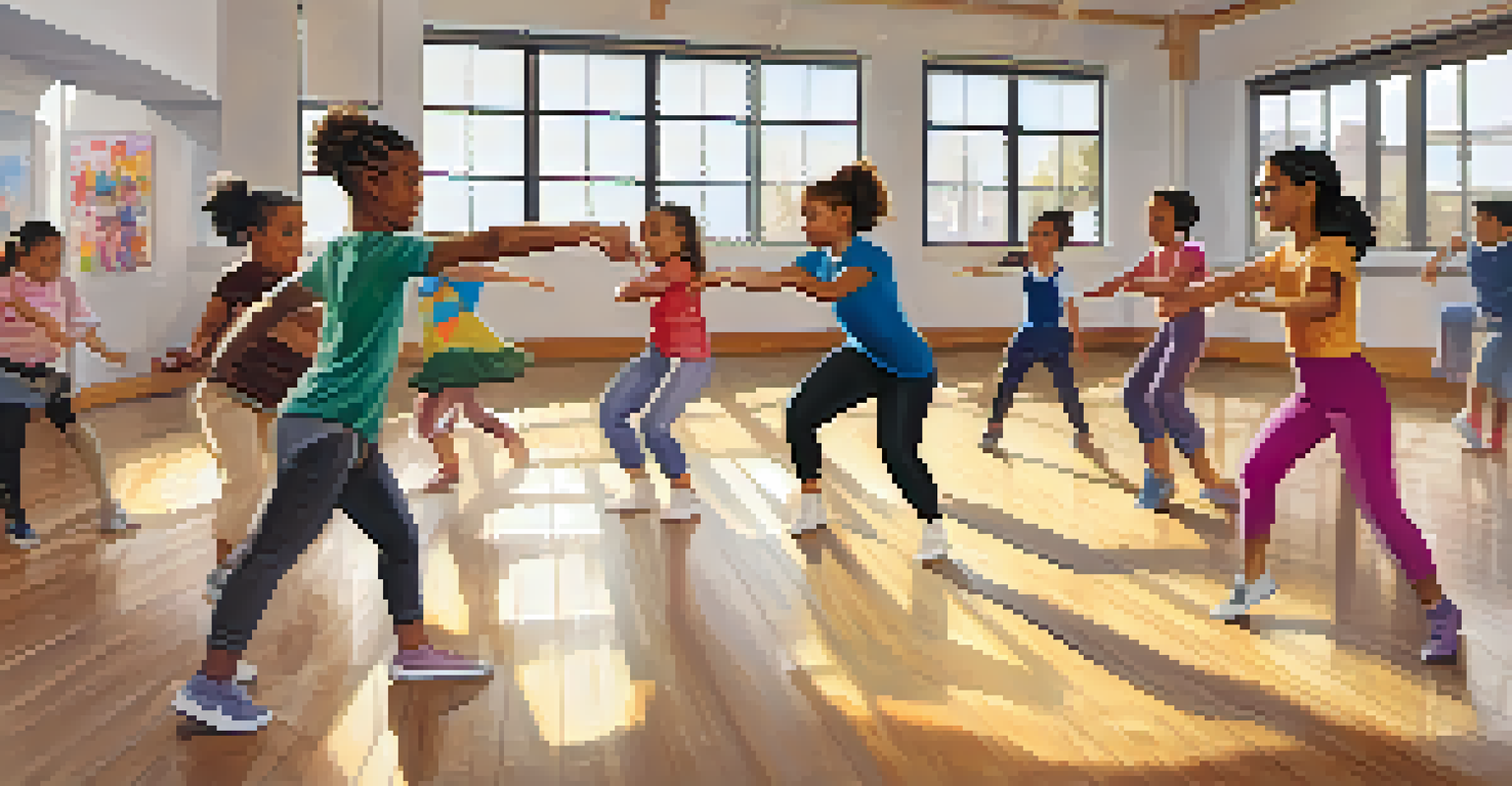The Role of Dance in Enhancing Public Space Accessibility

Understanding Public Space Accessibility
Public spaces are areas accessible to everyone, including parks, sidewalks, and plazas. The concept of accessibility goes beyond physical access; it encompasses the ease with which individuals can engage and participate in these spaces. A truly accessible public space invites diverse groups to interact, fostering a sense of community and belonging.
Public spaces should be accessible to all, not just in design, but in spirit.
When we talk about accessibility, it’s essential to consider all users, including those with disabilities, the elderly, and families with young children. These groups often face barriers that can hinder their enjoyment and participation in public spaces. Therefore, enhancing accessibility is crucial for creating inclusive environments where everyone feels welcomed.
Moreover, accessible public spaces can lead to increased social interaction and community engagement. By removing barriers, we encourage people to gather, share experiences, and celebrate their differences, ultimately enriching our communities.
The Power of Dance in Public Spaces
Dance is more than just a form of expression; it is a communal activity that can bring people together in powerful ways. When dance takes place in public spaces, it creates opportunities for interaction and connection among diverse groups of people. This communal aspect of dance can encourage participants to break down social barriers and engage with one another.

Additionally, dance can transform public spaces into vibrant hubs of activity. Imagine a plaza filled with the joyful sounds of music and the sight of people dancing—this lively atmosphere can attract passersby and invite them to join in. Such spontaneous interactions can make public spaces feel more alive and welcoming.
Enhancing Accessibility in Public Spaces
Creating inclusive environments in public spaces is essential for fostering community engagement and interaction among diverse groups.
Dance also has the unique ability to convey cultural stories and histories. By incorporating traditional dances into public events, communities can honor their heritage and showcase their identity, making public spaces not just accessible but also culturally rich.
Creating Inclusive Dance Programs
To enhance accessibility through dance, it's essential to develop inclusive programs that cater to everyone. This means considering various skill levels, ages, and physical abilities when designing dance activities. Offering a range of classes, from beginner to advanced, can help ensure that everyone has the chance to participate and enjoy the benefits of dance.
Dance is the hidden language of the soul.
Moreover, using adaptive dance techniques can make programs more accessible for individuals with disabilities. These adaptations allow participants to engage in dance creatively, regardless of their physical limitations. By prioritizing inclusivity, communities can forge stronger connections among residents and create a more welcoming environment.
Finally, partnering with local organizations that focus on accessibility can help promote these dance programs. By collaborating with schools, disability advocacy groups, and community centers, cities can reach a broader audience and encourage more people to engage in the joy of dance.
Dance Festivals as a Tool for Engagement
Dance festivals serve as fantastic platforms for enhancing public space accessibility. They showcase a variety of dance styles and cultural expressions, drawing diverse crowds and encouraging participation. These events can transform a simple park or street into a bustling venue where everyone feels invited to join the celebration.
Moreover, dance festivals can also highlight the importance of accessibility in event planning. By ensuring that all festival areas are wheelchair-friendly, providing sign language interpreters, and offering sensory-friendly spaces, organizers can demonstrate their commitment to inclusivity. This not only enhances the experience for attendees but also sets a standard for future public events.
Dance Festivals Promote Inclusivity
Dance festivals can transform public spaces into vibrant hubs of participation by showcasing diverse dance styles and prioritizing accessibility.
Additionally, festivals provide opportunities for education and awareness. Workshops and performances can teach attendees about the significance of accessibility in dance and public spaces, fostering a greater appreciation for the diverse ways people can engage with their communities.
The Role of Local Governments in Promoting Dance
Local governments play a crucial role in promoting dance as a means of enhancing public space accessibility. By investing in dance programs and events, municipalities can create environments that encourage active participation and enjoyment of public spaces. This investment not only benefits the arts but also strengthens community bonds.
Moreover, local governments can facilitate partnerships between artists and community organizations. By supporting collaborations, cities can ensure that dance programs are tailored to meet the needs of diverse populations, ultimately fostering inclusivity. This collaborative approach can lead to innovative dance initiatives that resonate with residents.
Additionally, governments can advocate for policies that prioritize accessibility in public spaces. By creating guidelines that require accessibility considerations in event planning, cities can lead by example and inspire other organizations to follow suit.
Engaging Communities Through Dance Education
Dance education is a powerful tool for fostering engagement and accessibility in public spaces. By introducing dance programs in schools and community centers, cities can cultivate a love for dance among young people. This early exposure can lead to increased participation in public dance events and initiatives as they grow older.
Furthermore, dance education can empower individuals to express themselves creatively. Providing opportunities for people to learn various dance styles can encourage them to share their stories and experiences through movement. This self-expression can foster a deeper sense of belonging within the community.
The Role of Education in Dance
Integrating dance education into community programs empowers individuals and bridges generational gaps, enhancing public space accessibility.
Finally, incorporating dance education into community programs can bridge generational gaps. When people of all ages come together to learn and perform, it creates a sense of unity and shared purpose, further enhancing the accessibility and vibrancy of public spaces.
The Future of Dance and Public Space Accessibility
As cities continue to evolve, the role of dance in enhancing public space accessibility will likely grow. Innovative approaches to dance programming and public space design can create environments that prioritize inclusivity and community engagement. By embracing these changes, we can foster more vibrant public spaces that cater to diverse populations.
Moreover, the rise of technology presents exciting opportunities for dance and accessibility. Virtual dance classes and performances can reach individuals who may not be able to attend in-person events. This digital expansion can further democratize access to dance and encourage broader participation.

Ultimately, the future of dance in public spaces lies in collaboration and creativity. By working together—artists, community leaders, and local governments—we can ensure that dance remains a vital part of our public spaces, enriching lives and building connections for generations to come.